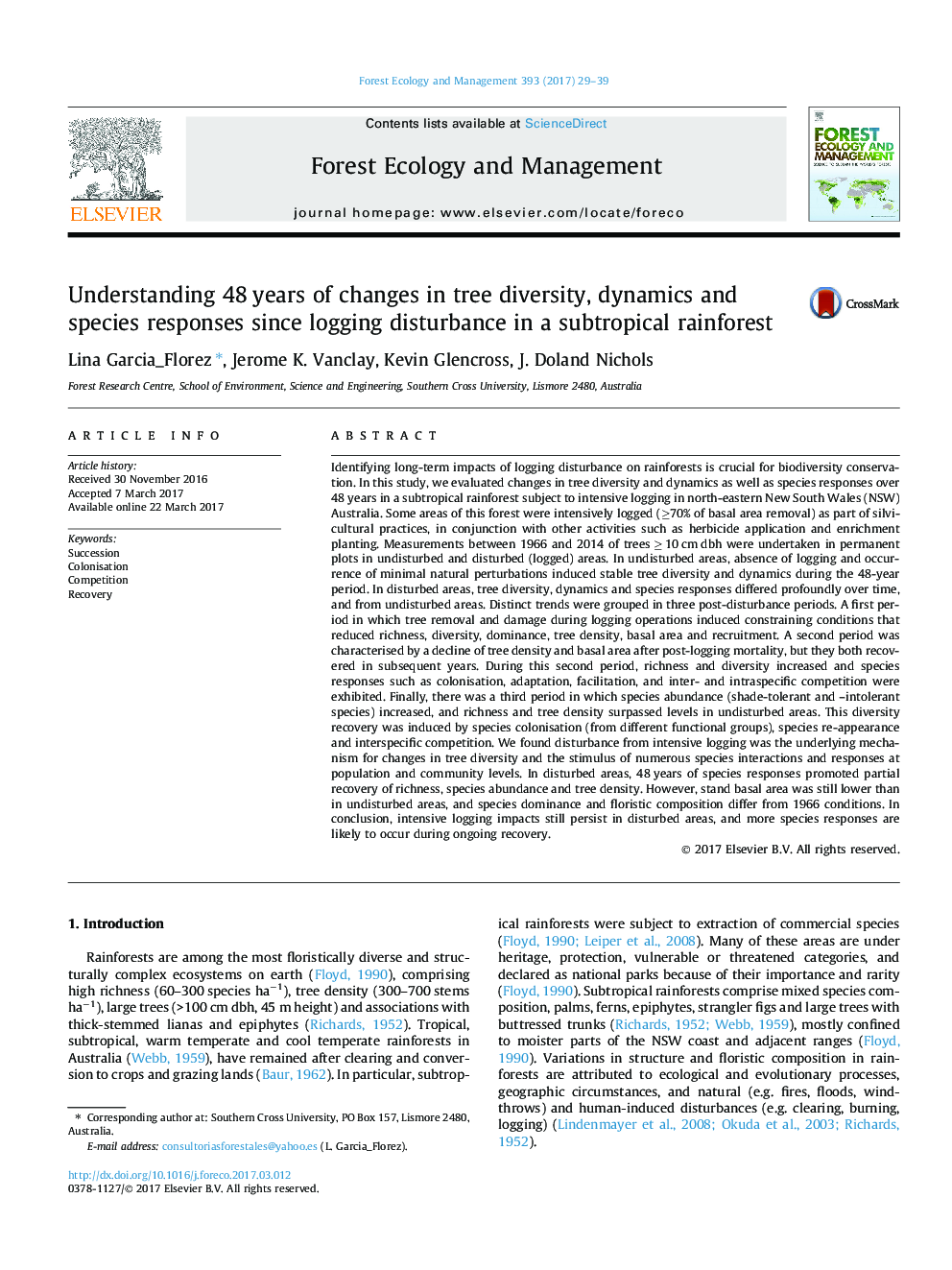| کد مقاله | کد نشریه | سال انتشار | مقاله انگلیسی | نسخه تمام متن |
|---|---|---|---|---|
| 6459373 | 1421365 | 2017 | 11 صفحه PDF | دانلود رایگان |

- In undisturbed areas, diversity and dynamics were steady over 48Â years.
- In disturbed areas, diversity and dynamics differed profoundly throughout time.
- Three post-disturbance periods were identified.
- Species responses included colonisation, adaptation, facilitation and competition.
- Intensive logging impacts still persist in disturbed areas.
Identifying long-term impacts of logging disturbance on rainforests is crucial for biodiversity conservation. In this study, we evaluated changes in tree diversity and dynamics as well as species responses over 48 years in a subtropical rainforest subject to intensive logging in north-eastern New South Wales (NSW) Australia. Some areas of this forest were intensively logged (â¥70% of basal area removal) as part of silvicultural practices, in conjunction with other activities such as herbicide application and enrichment planting. Measurements between 1966 and 2014 of trees â¥Â 10 cm dbh were undertaken in permanent plots in undisturbed and disturbed (logged) areas. In undisturbed areas, absence of logging and occurrence of minimal natural perturbations induced stable tree diversity and dynamics during the 48-year period. In disturbed areas, tree diversity, dynamics and species responses differed profoundly over time, and from undisturbed areas. Distinct trends were grouped in three post-disturbance periods. A first period in which tree removal and damage during logging operations induced constraining conditions that reduced richness, diversity, dominance, tree density, basal area and recruitment. A second period was characterised by a decline of tree density and basal area after post-logging mortality, but they both recovered in subsequent years. During this second period, richness and diversity increased and species responses such as colonisation, adaptation, facilitation, and inter- and intraspecific competition were exhibited. Finally, there was a third period in which species abundance (shade-tolerant and -intolerant species) increased, and richness and tree density surpassed levels in undisturbed areas. This diversity recovery was induced by species colonisation (from different functional groups), species re-appearance and interspecific competition. We found disturbance from intensive logging was the underlying mechanism for changes in tree diversity and the stimulus of numerous species interactions and responses at population and community levels. In disturbed areas, 48 years of species responses promoted partial recovery of richness, species abundance and tree density. However, stand basal area was still lower than in undisturbed areas, and species dominance and floristic composition differ from 1966 conditions. In conclusion, intensive logging impacts still persist in disturbed areas, and more species responses are likely to occur during ongoing recovery.
Journal: Forest Ecology and Management - Volume 393, 1 June 2017, Pages 29-39